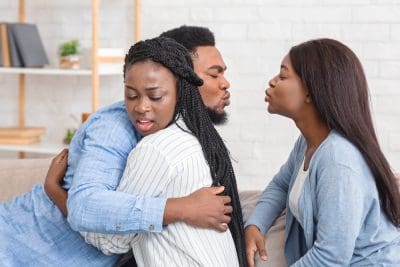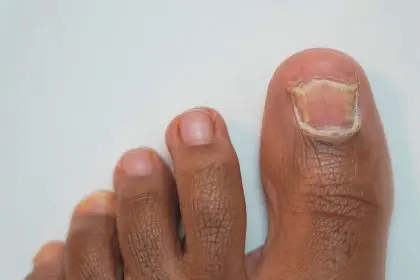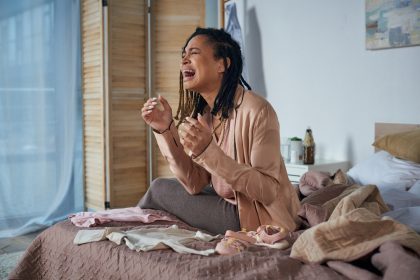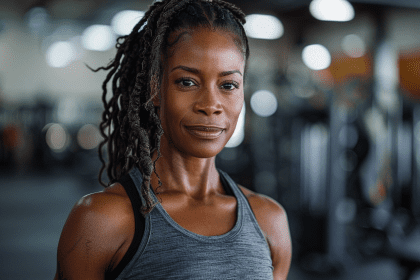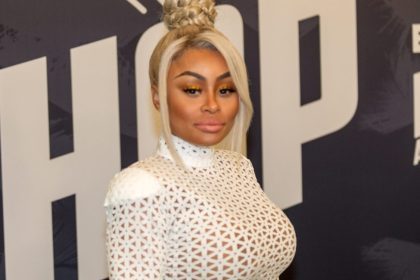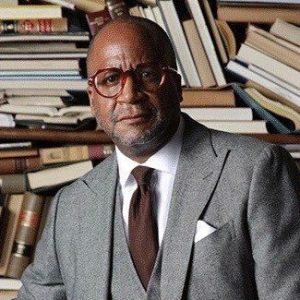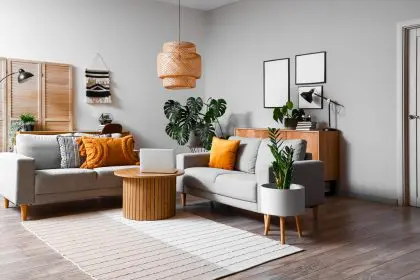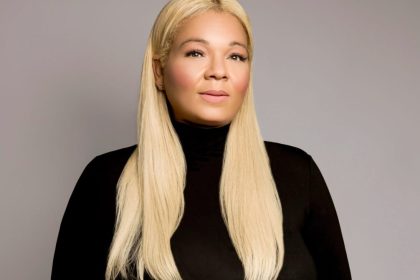In this edition of Design and Dialogue, Munson Steed shines a spotlight on the trailblazing designer Elle G Cabot during Pride Month. Known for her vibrant fashion illustrations and fearless artistic expression, Cabot brings to life themes of the African Diaspora, the voguing/Kiki/ballroom scene, and the visual poetry of hip-hop. She masterfully uses mediums such as ink, watercolor, acrylic, and pencil to add depth and nuance to her work.
Cabot, raised in the North Shore suburbs of Chicago, holds a Bachelor’s of Fine Arts degree from the School of the Art Institute of Chicago. Her aesthetic draws from her time in New Orleans, Seattle, and her travels across Africa and Europe. Now residing in Farmington Hills, Mich., Cabot has interned during New York Fashion Week, exhibited at Gallery 46 in Pontiac, and is currently working on a multimedia series exploring Black fashion identity as global currency.
As we celebrate Pride Month, this article delves into Cabot’s creative world, uncovering the inspirations behind her stunning work and her dedication to representation and pride in the LGBTQ+ community.
Munson Steed: Hey, everybody! This is Munson Steed, and welcome to Design and Dialogue, where we talk about where art and culture meet. And when we meet the very creative side of designers who are creating motifs, illustrations and creativity to give voice and design, I am so proud. She is definitely a trailblazer. Elle! How are you?
Elle G Cabot: I’m very well, Munson. Thanks for meeting with me.
MS: Just why art? I mean, why did art speak to you? And why have you picked it up as a voice and expression that you choose to design and give life to?
EC: It has become something that I can’t not do. It’s so much; it’s oxygen. Our people. I’m fascinated by how we present ourselves. Just the verve, the vigor. It’s not always what we’re wearing; it’s always the how, and that has always fascinated me. To date myself, there was a CNN show called Style with Elsa Klensch every Saturday morning. It came on before Soul Train, and I watched it every weekend.
They had shows constantly, and I was just blown away by fashion back then. The people on the runways did not look like us, but I saw versions of trends that my cousins were wearing. I saw all of that appropriation going on, and I was drawn to want to lend my voice to that world.
MS: When you think about fashion illustrations and the very beauty of storytelling, who has inspired you? Just some artists and illustrators that really inspire you to burn heavy and give life to characters that I’m really astounded by the beauty you give.
EC: Thank you. Although she is a visual artist, but not necessarily someone who creates images with her hands, Grace Jones continues to light me up. The verve within her to go counter-culture or to just listen to her own, to dance to the beat of her own drum is big for me. But specifically in the design realm, designers like Byron Lars, Patrick Kelly, Willi Smith. Rest in peace. So many, so many.
MS: Yeah, I would say Willi Smith. That’s so funny. And we lost so many giants in that moment where design and there was no prep. There was no context. There was almost not enough testing to understand exactly what had happened for prevention at that moment. But what did you like about his work when, since you’ve mentioned him, that really spoke to you?
EC: Willi Smith predated Cross Colours and Karl Kani by a bit. The way in which there was a toned-down element in fashion, Willi Smith always broke that. The colors were always vivid. I also was blown away because African textiles weren’t as available to us then as they are now. Although the colors were not necessarily, or the fabrications were not always necessarily African or Afrocentric, the tonality was very African. Everything was extremely bright.
The models were not fair. He used Brown-skin, chocolate folks, and to say that this was a big deal at the time in fashion was a big deal. As far as him being a Black-owned independent brand that got high fashion coverage that was in Vogue, but also in Essence, in Harper’s Bazaar, but also in Right On was a really big deal. He crossed all those lines, and every major European house right now, they’re still riding on that. They call it street style, but Willi Smith was doing it first.
MS: Well, you talk about street style, you talk about artists. There’s this guy that they put his crown on, and he truly is thought of as another visual at this point artist, and he was unafraid. How did and does he inspire you? That gentleman Basquiat, in terms of thinking about how you approach a piece, and the level of fearlessness.
EC: He had so many untitled pieces. He had so many pieces that incorporated a core message. But there was just a boldness and not feeling. The interpretation I have is that he didn’t feel like he needed to spoon-feed a message to anyone, and there was also a boldness of line quality. There’s a boldness of color choice. The blacks, strong blacks, strong reds, strong yellows of the crown, just as you mentioned, just absolutely prescient. Just the pride that is inherent in all of his work. The dino’s repeat, and I think there’s also something in his work that speaks to people of all ages.
There’s also something in his work that straddles the line of representation versus abstract, and that versatility is fascinating. I don’t discount the milieu in which he created. This was not a time where Black art — I mean his work is breaking records now, but at the time that he created, it was not a time where Black artists were being given their due. His creating is just mind-blowing, and clearly his contemporaries, his peers, particularly Andy Warhol, they saw the genius as well.
MS: When we think about genius, and we think about pride and Pride Month, what do we say to those who are really trying to grapple with themselves, young artists who may or may not be living in their truth at this moment? How do you encourage them to live in their moment through their art and in their life?
EC: I would just encourage them to really journal, or some other introspective documentation, some other habit of documentation, whether it be a written journal, whether it be a vlog or videos that they may or may not share with the world, but some sort of documentation that they have an ability to go back and reflect on what is going on in their lives. I was drawing before I could talk, but everyone’s gift is not going to manifest in the same way.
Some of us may need to see it on paper, to go back and see it in a video or a loved one reflecting and saying, “I can tell you’re really happy when you do X, Y, and Z. I can tell time stops for you when you do X, Y, and Z.” Whatever that is that stops time for you. For me, the work stops time. I’m not present. I’m gone, and the work is virtually almost done when I come out of my artistic state. I would encourage them to do that, because the world really does need the gifts of every person on the planet.
We have solutions environmentally, socially that will not get solved without the contribution of every one of us, and I know that sounds like an aphorism, but it is true. Our ancestors really smile on collaborative efforts and the unimaginable obstacles that they overcame. We are the descendants of people who survived, and they did so jointly as a community. When each of us gets honest with ourselves about our gifts, we are in a position to join forces with one another and make real change.
The ways in which the needle was moved during the Civil Rights Movement, those were collaborative efforts. We can speak of certain luminaries, but thankfully we have the historical record to show Dr. [Martin Luther] King’s collaborations with Bayard Rustin and others. Audre Lorde, the list goes on and on, Nikki Giovanni and James Baldwin. These people were in concert with one another. They were in conversation with one another, and we all need to be in conversation with one another for the challenges that we face.
MS: Well, I love that. How do you challenge yourself when you begin to approach your next piece?
EC: I am aware of the artistic trope of the artist that does not like anything that they produce. I’m not so far to that extreme on the spectrum, but I am immediately, upon finishing a piece or in those final strokes of a piece, I have already taken note of what needs to be better, what could be better, what must be better the second time around. It’s an innate restlessness, and it was present in design school. It was present in middle school, in previous artistic stints.
MS: When people say and speak to you about your brand as it relates to how you design, what are you saying to them when they put a piece of Elle on their wall?
EC: I’m always saying thank you. I’m not really just saying thank you; I’m really humbled by it, and I really say thank you. I listen almost all the time. Actually, all the time. I say thank you, and then they follow up with a story of a relative that came by to see it, and the relative’s first impression of seeing the piece. Often it’s also a matter of, “I thank you for this piece, Elle. I got this piece because it reminded me of me, of my sisters,” or there’s some personal connection that each of my patrons has had that they have felt like the piece.
So I often just really, I listen to that, and that actually gets incorporated into my next piece. Those feelings and wanting to … Community is just a big piece for me in design and in life.
MS: Express for those people that don’t have a community, how important or why the value as an artist having community? What does it give you? What are the benefits of having that design community, the Breakfast Club, where you can walk in and know that it’s a safe space for you?
EC: Yes, so in design school, every Friday was critique day. Critique day was sometimes quite brutal. Initially quite brutal, but that was something I came to look forward to because it actually was just brutally honest. Honesty is just so important. Community is there to surround you and love you, but community is also there to be honest with you. The Breakfast Club is so large or has become so large, there is not necessarily a critique in the sense of, “Why did you make that choice?” or, “Why did you?” It doesn’t come out in such an overt fashion, but it actually does come out.
I really do pay attention to mannerisms, facial expressions, people’s initial reactions when my pieces come out of the portfolio that I carry them in, and that informs a lot. It doesn’t necessarily sway, but it goes in there. It goes into the room. It goes into the stew that germinates my next piece. One thing that probably does always carry over is anytime I see pride within our people, many of my figures, they have a tilt of the head, a twist of the hip. There’s an attitude that is uniquely Black.
I do see pride often in the reactions when I show my work, and that I do want to carry because that is something that pushes me to go forward. That is something that when I have felt in the dark night of the soul, that has been something that’s pulled me out. I think of my grandfather. I think of my grandmother. I think of great-grandparents who suffered indignities I’ll never know about, some of which I know little bits about sanitized versions of, and I know that they knew that we were worthy of.
As a people, we’re worthy of veneration and to carry ourselves with pride. A sense of community pride. We, as a people, are often denigrated, although our culture is constantly appropriated for profit and entertainment. But we have to remember when anyone that’s the community, it’s just so important. Don’t let yourself become isolated. Seek out your people. That would be my message because your people, they will celebrate who you are uniquely.
MS: Lastly, you chose and choose fashion to be kind of your voice in many of your pieces. Why? We’re a fashionable people. You’re taking it and making it so that we have access to it. How important is it for us to access the fashion culture that we have?
EC: It is so important because from a utilitarian standpoint, we have to wear clothes. Depending on our occupations, we have things we have to wear, or things that communicate our station to others. That is just a necessity. That is just a part of life. So there’s a utilitarian aspect. Then, as a people, we always take it a step further, whether it be the jewelry, the makeup.
These things that we do, they will end up in the zeitgeist. They will end up being … Money will be made off of them, and we need to be a part of that conversation, and we need to be driving the conversation, and we need to be benefiting from the commerce that goes on because of our… We do these things in our sleep. We do these things in our sleep. Before the beginning of the conversation, we talked about Marvin Gaye, and there’s so many images of him in the studio, and he’s got these boots and these… Our fashion is just out of control, and we need to be a part of it because we just do it in our sleep.
It’s not even something I think we think all that consciously about. I mean, yes, social media has made it so we’re very aware of what we’re wearing, but even without it, we were sharp. Before that, we’re gonna always be sharp. We need to document it and celebrate it in a conscious fashion.
MS: Super. Well, happy Pride Month! Thanks for hanging out with me here on Design and Dialogue. Brothers and sisters, ladies and gentlemen, and my entire community, LGBTQ+++, we love you. Thank you so much, Elle, for all you continue to give here on Design and Dialogue.
EC: Thank you, Munson. Happy Pride Month, everyone.

